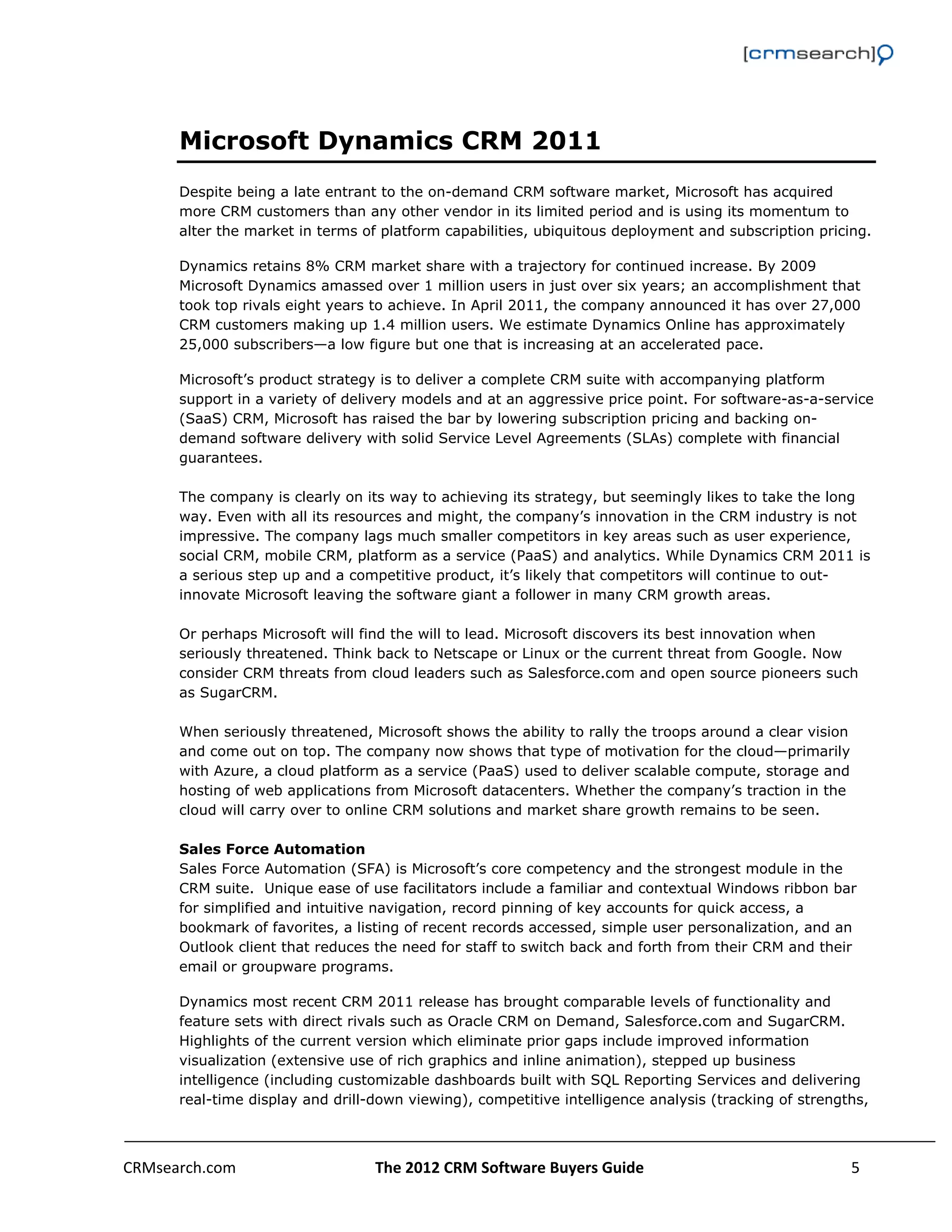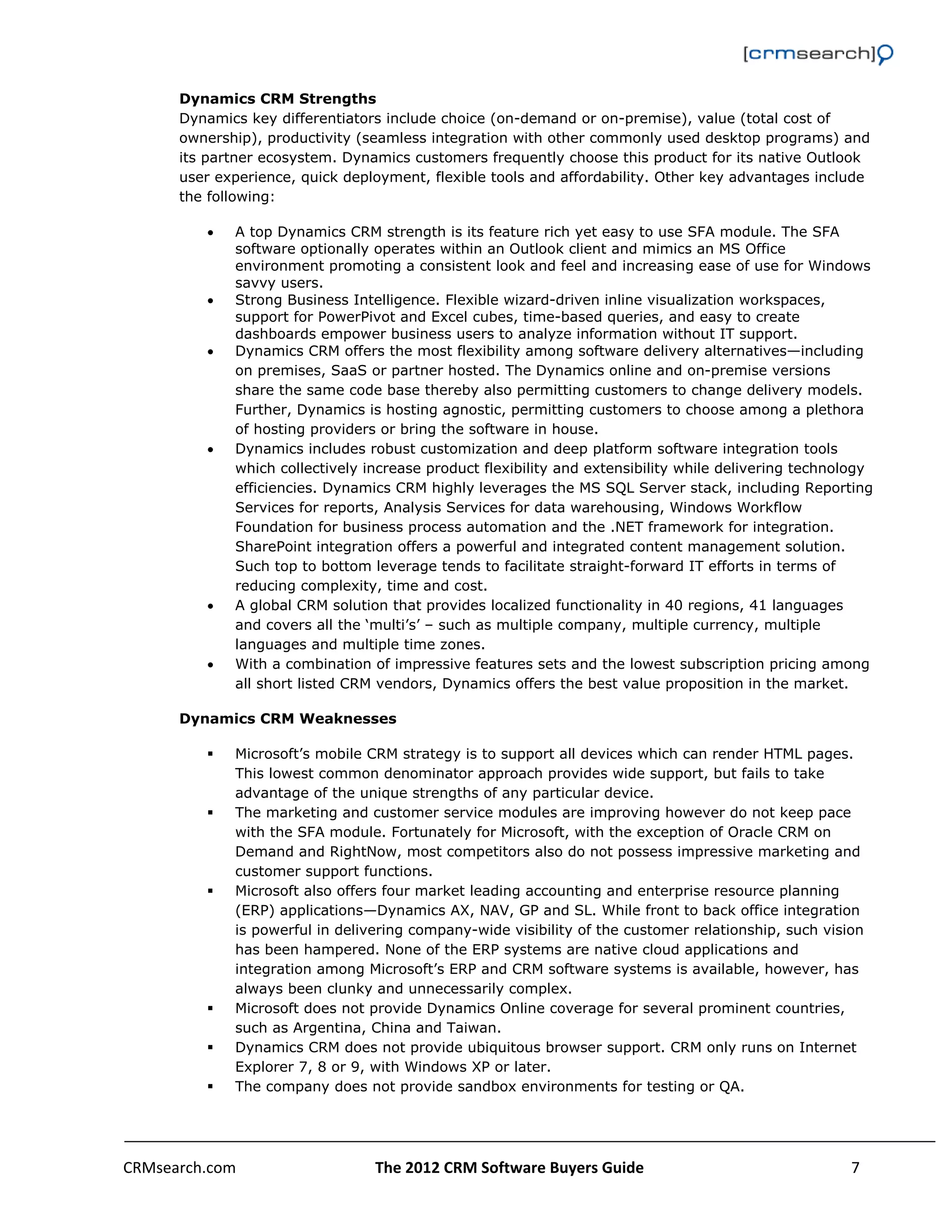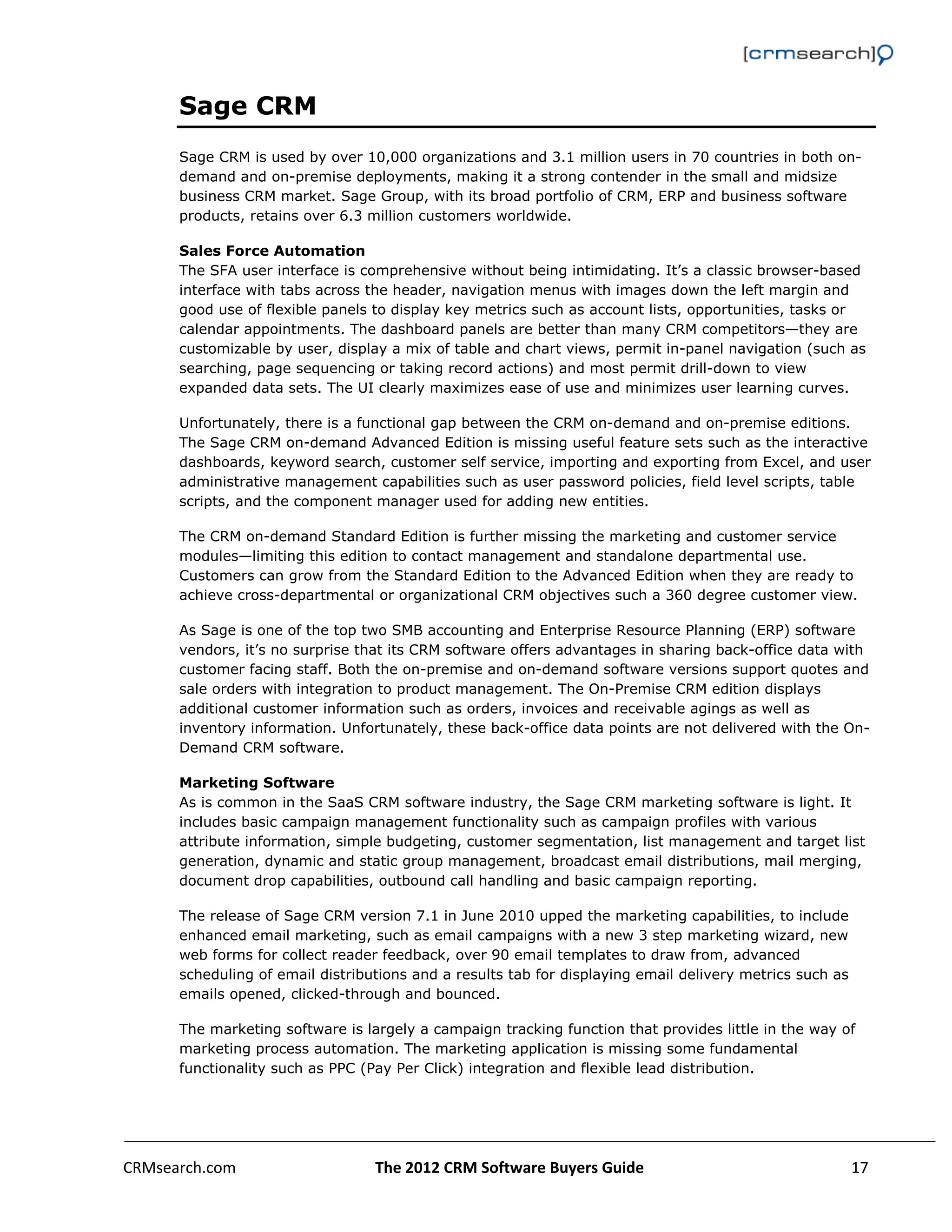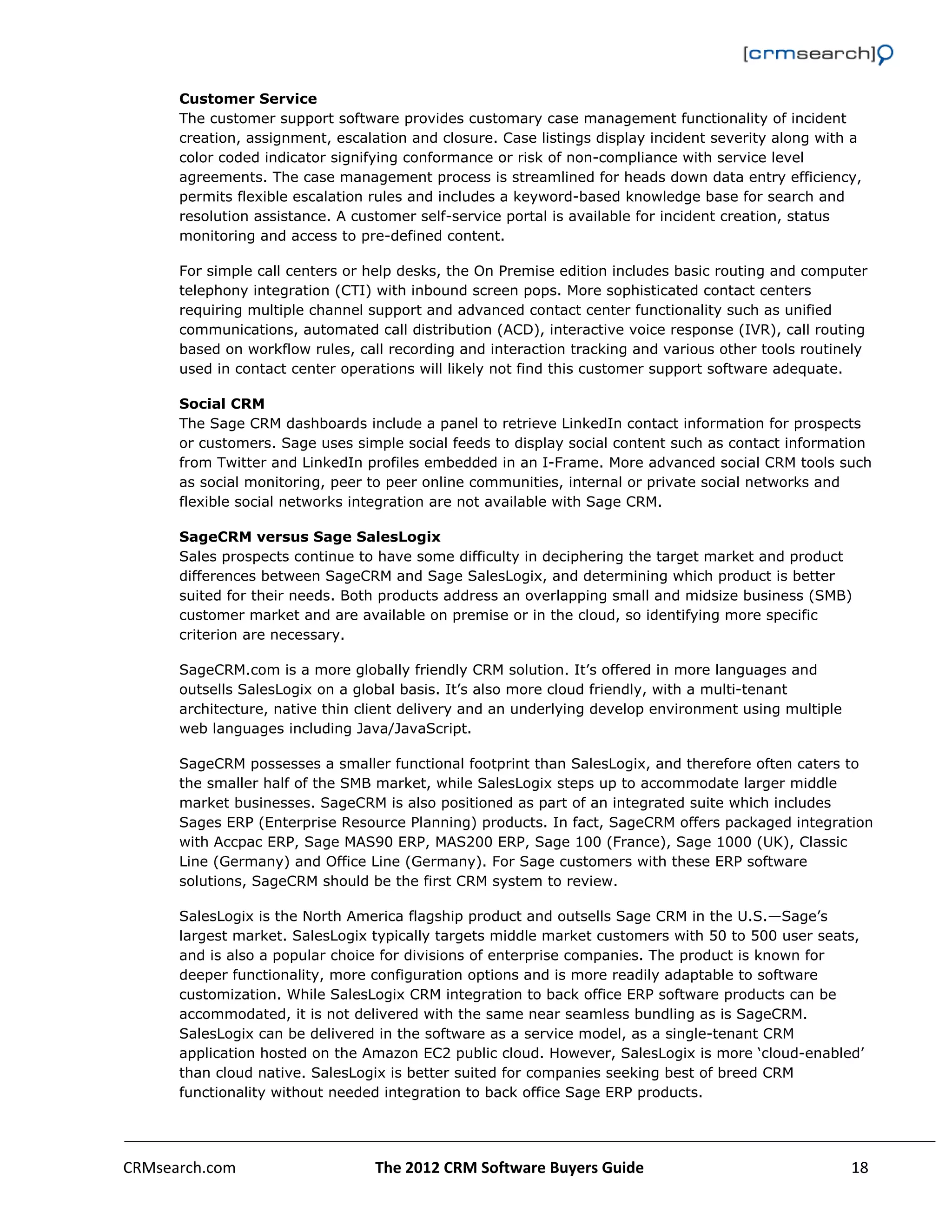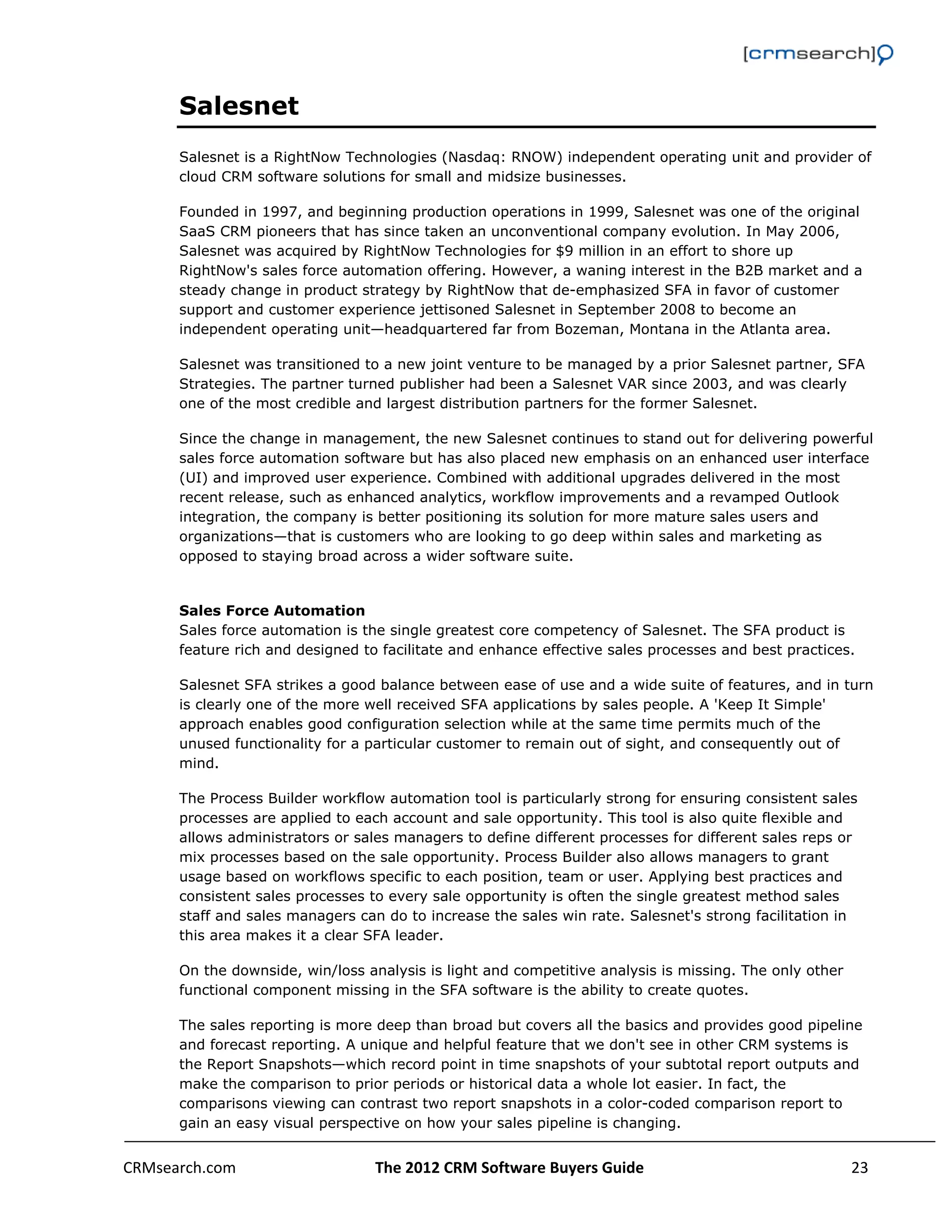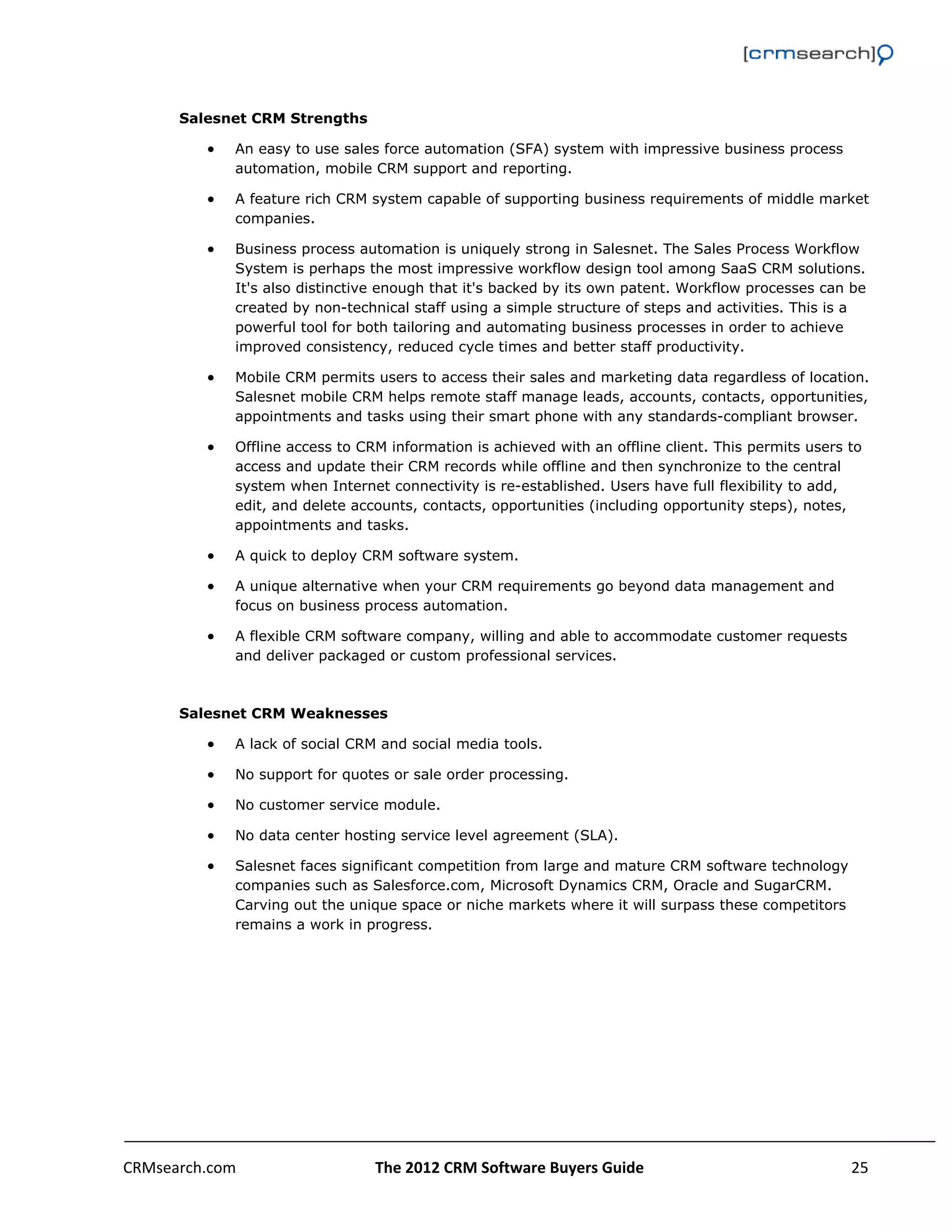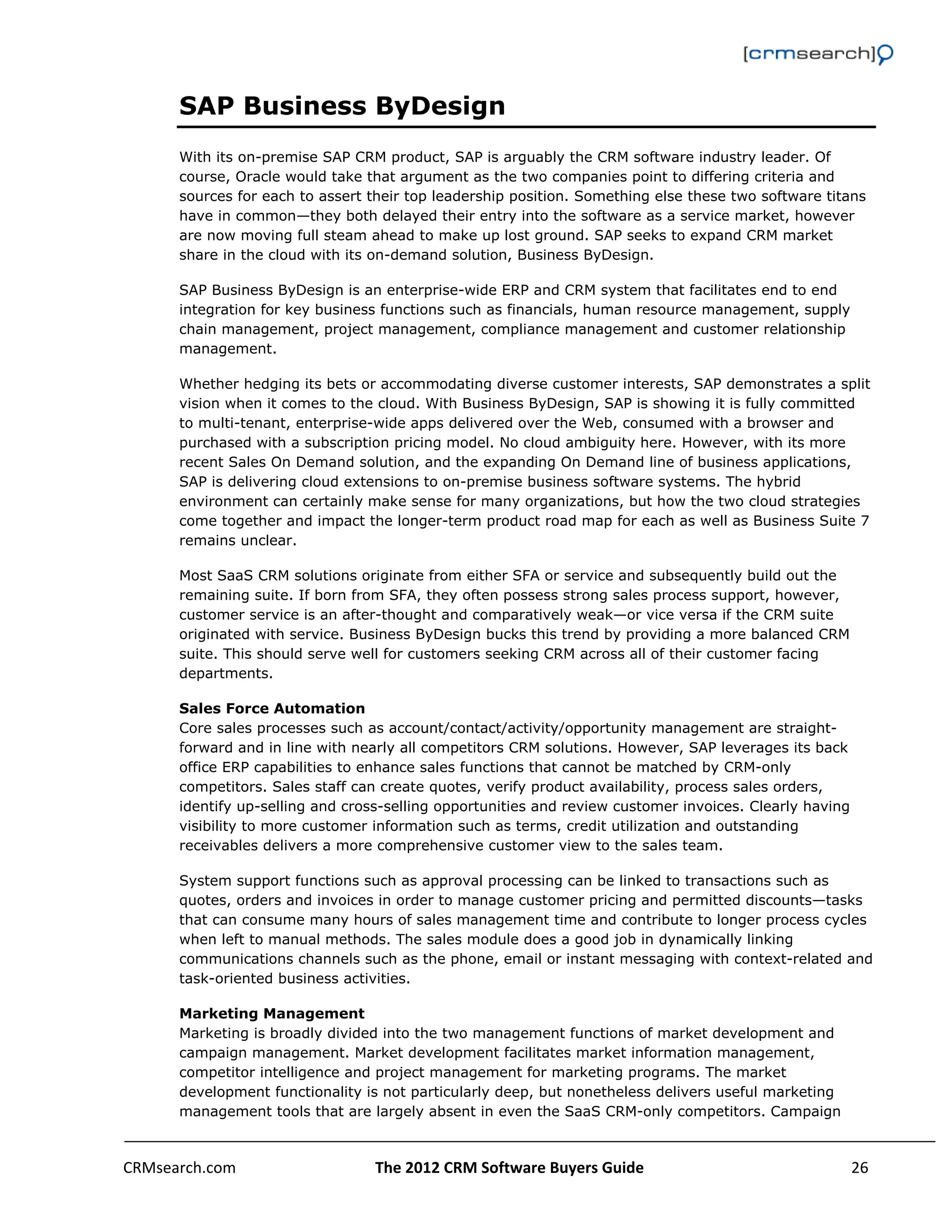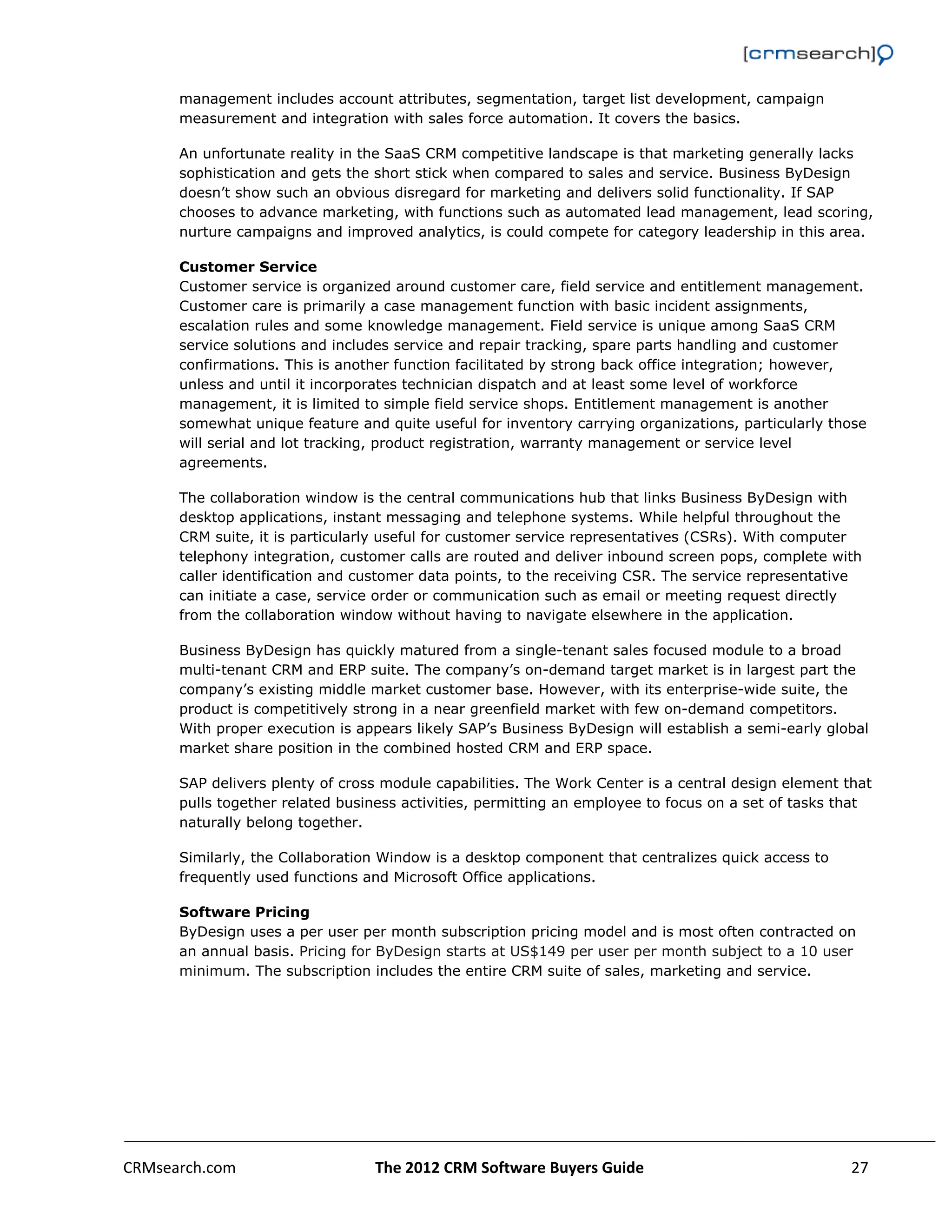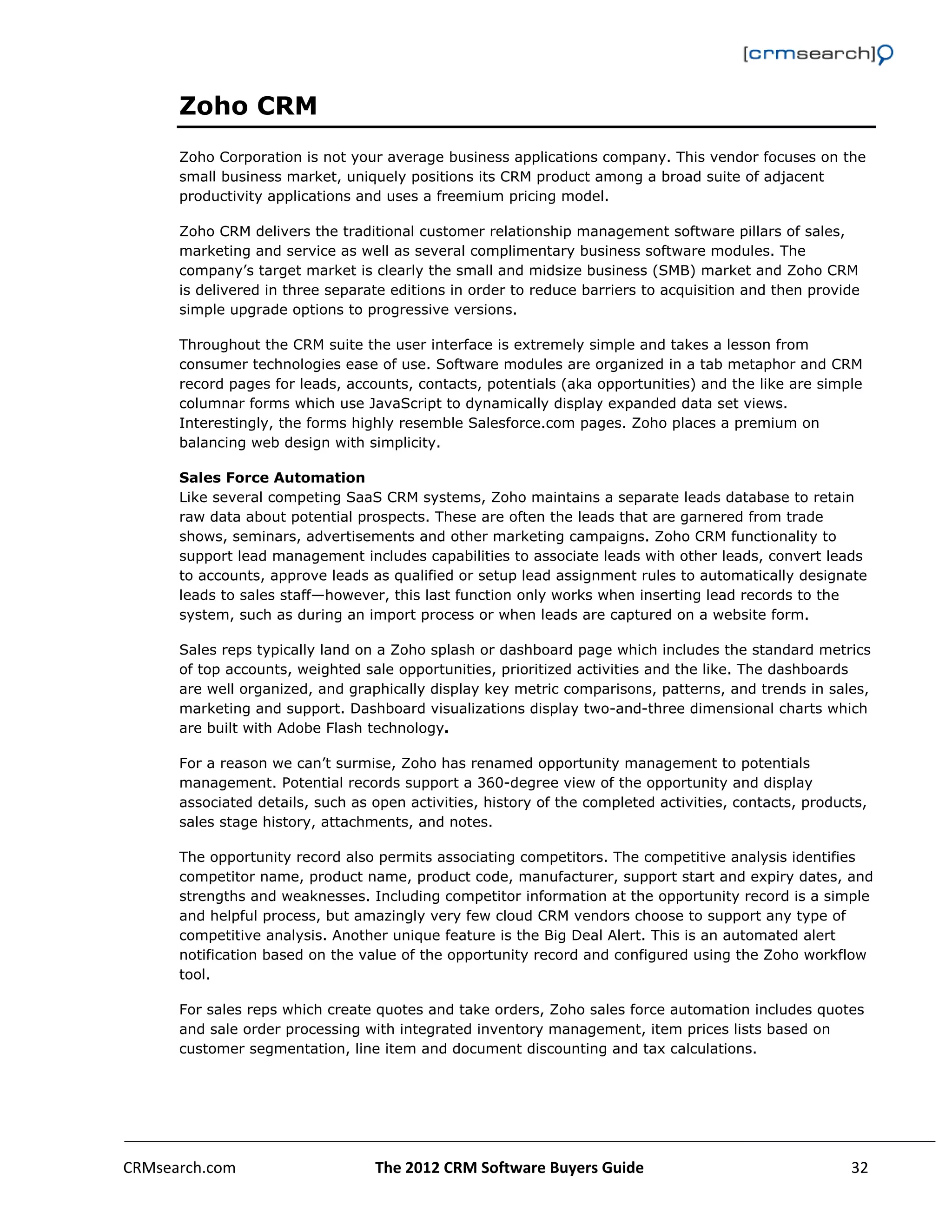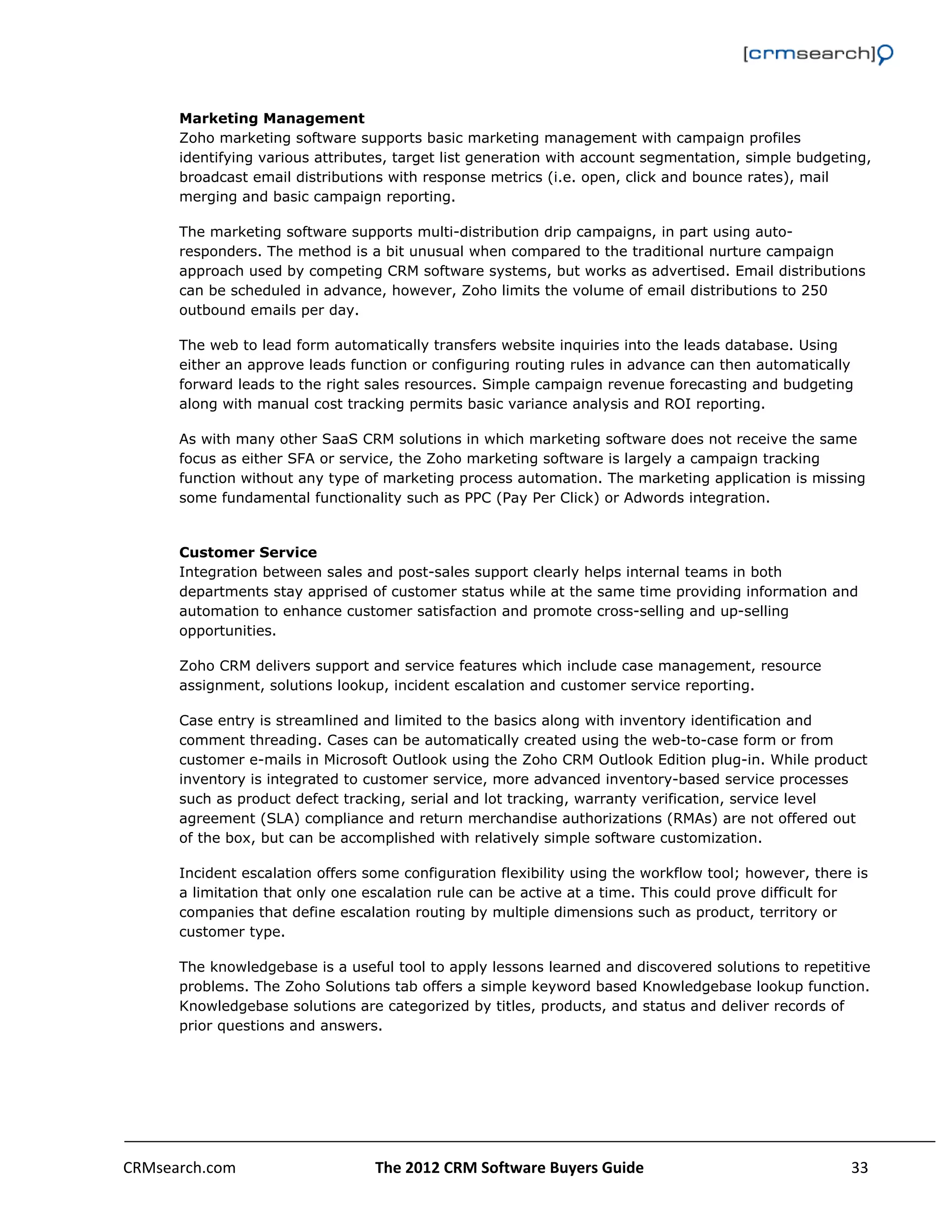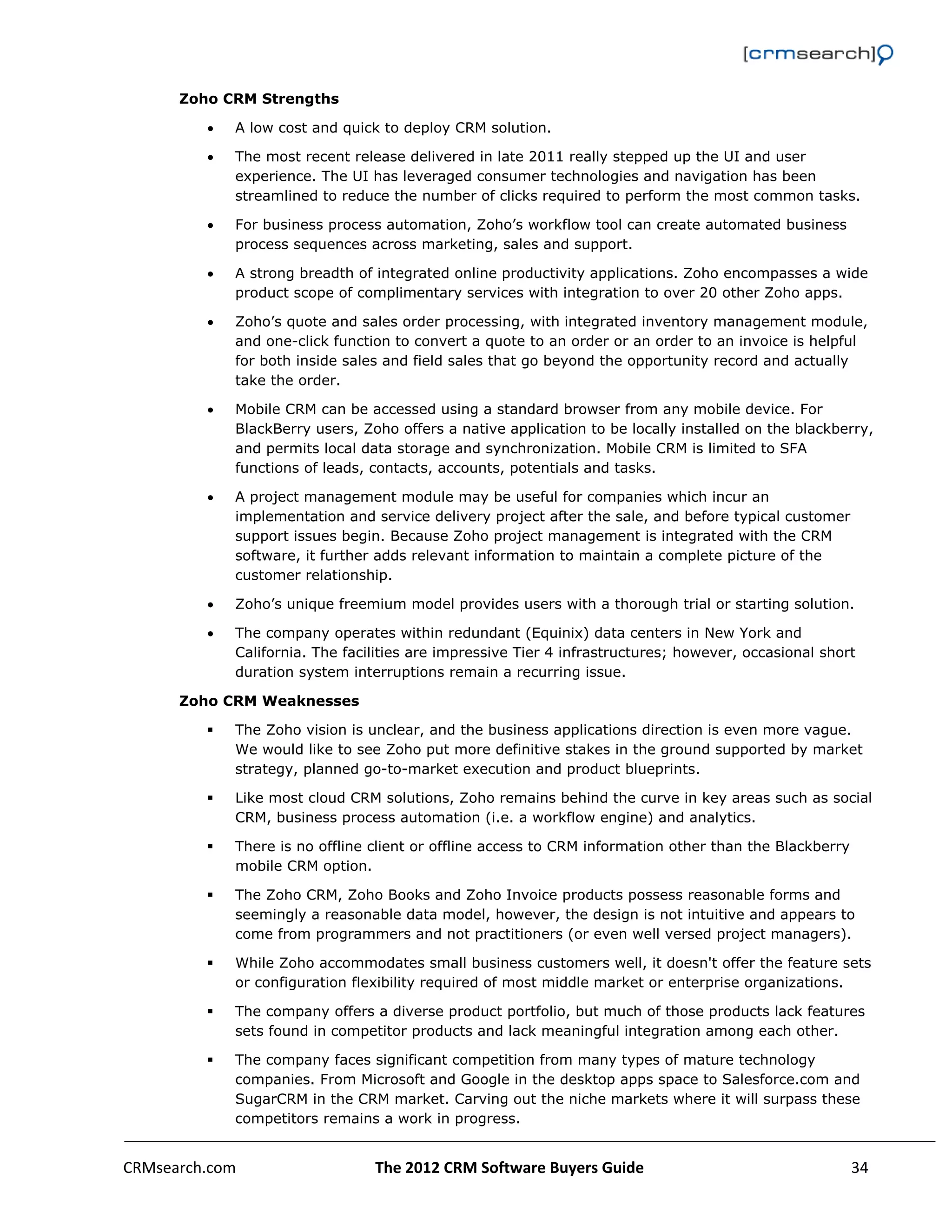Microsoft Dynamics CRM 2011 provides a feature-rich sales force automation module and strong business intelligence tools. However, its marketing and customer service modules lag behind, and it takes a lowest common denominator approach to mobile CRM. Dynamics offers flexibility in deployment options and high integration with other Microsoft products, but lacks innovation in areas like social and mobile CRM compared to smaller competitors.




